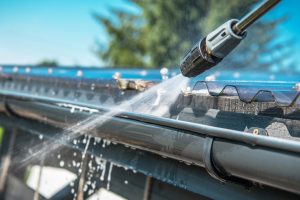Keeping your home’s drainage system working well is necessary for preserving your property’s structural integrity.
When rainwater, wastewater, and other types of debris accumulate in any section of your living spaces, it can cause severe damages that require significant repairs.
The drainage system is often related to the plumbing network where fluids and solid wastes are disposed of.
However, the gutter and downspouts, which serve as the discharge or exit points for falling rain and snow, can also contribute to the entire drainage setup.
Regular maintenance makes it crucial to keep your roof free from water buildup and debris. This holds particularly in areas with heavy rain and snowfall like Minnesota. So, if you’re in the said state, consider hiring gutter cleaning, Rochester MN, and similar contractors to help your roof and home in excellent condition.
It’s essential to take the following steps to reduce the risks of spending on roof repair and drainage costs.
Ensure That Your Downspouts Are Clear
Your downspouts must always be clear of debris and solid materials that clog them up. Wastewater can damage your roof when it accumulates in the drainage system. Too much pressure can cause leaks or destroy your gutters and downspouts. Use a hose to flush out any remaining debris that may be stuck in the downspout. Increase pressure to force these out.
Check And Flush Your Gutters Periodically
Besides annual maintenance works done by professionals, inspecting your gutters every few months, especially after a heavy downpour, helps ensure that your roof drains remain in tiptop condition. Rainwater must run through the gutter toward the downspouts freely.
Use a ladder to check your gutters for accumulated debris and trapped rainwater. Ideally, you must wear gloves or use a trowel to effectively remove solid waste like leaves, branches, and other materials.
When leaves rot in your gutters, it can cause algae and moss growth, spreading to your roof. Left unaddressed, this may lead to a roof replacement.
After removing these wastes, test your roof drainage’s health by flushing out the remaining water with a hose.
This task may sound simple, but care should be taken when using the hose, as the force can pull you back, causing you to fall.
If you spot any issues, such as roof material runoffs, don’t attempt to fix your roof and call professionals to resolve the issue.
Don’t Forget Your Outdoor Drains
A yard drain can catch runoff water from the downspout and your outdoor area. It has a pipe buried underneath that drains water towards the storm drain or on the streets. These outdoor drains are typically located in a depressed area anywhere in your yard and prevent water from pooling in your outdoor spaces.
Removing excessive grass growth around the drain gate is one of the easiest ways to keep water away from your property. To prevent clogging, remove solid waste and debris like rocks, dirt, and leaves in and around the drain. You may also flush out the water running through the drain and identify where the exit point is.
Avoid Flushing Down Solid Waste
Your septic tank has limited capacity and can only accommodate a particular volume of waste. To ensure they’re functioning well, keep paper towels, tissues, and other solid items away from the toilet drain and only flush wastewater.
Do the same for your garbage disposal. Minimize leftover food and only prepare what you need. Fruit and vegetable peels can be repurposed and integrated into the compost. Maintain your disposal by running warm water and allowing it to flush out stubborn grease and gunk by adding vinegar and baking soda.
Remove Clogs And Gunk In Your Indoor Drains
Keep your indoor drains clear of solid waste, especially in the kitchen and bathrooms. To prevent major issues, inspect your pipes for blockage and leaks. Use a drain plunger or auger to remove obstructions like persistent gunk, hair, soap residue, grease, and other debris.

As a preventive measure, consider buying a drain guard to effectively leave solid waste away from your drain pipes, especially hair. This tool helps keep your drains from clogging.
For maintenance, try homemade remedies like flushing hot water, vinegar, and baking soda to remove them. Sometimes, what seems like a small problem can indicate a severe one. In such cases, it’s best to have a professional plumber check your system and fix any ‘minor’ issues.
Conclusion
You must regularly check your home’s indoor and outdoor drainage systems to ensure they work well. The abovementioned activities can boost maintenance works by professionals like roof and gutter cleaners and plumbers. These service providers can spot minor issues and prevent them from becoming worse. This way, homeowners can be alerted of any problems, preventing significant repairs down the road.

